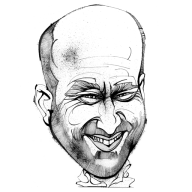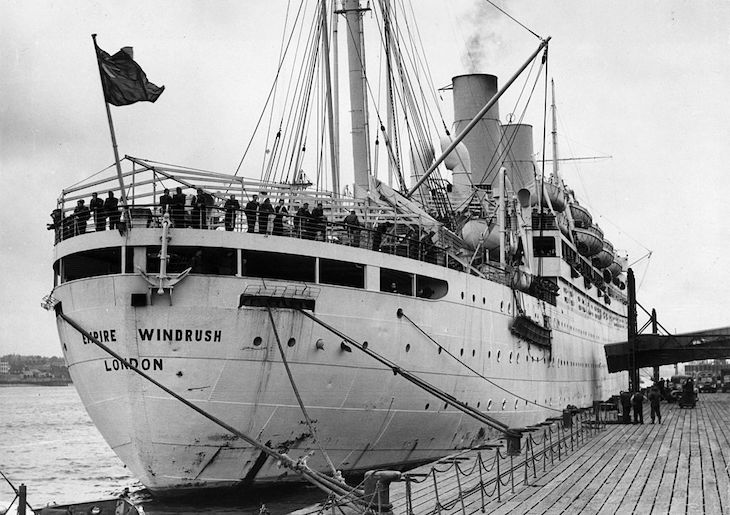This article is not about me. It’s about a woman in her late eighties called Ethel who goes to my local church; she came to this country in the Windrush era, which began 75 years ago today when 500 passengers arrived at Tilbury in Essex on 22 June, 1948. But this paragraph is about me. For most of my life I’ve felt a bit at odds with church, despite trying to join various parishes. In recent years I’ve been going, on and off, to a church in Harlesden whose congregation is mostly black (Caribbean), maybe eighty per cent. I have often felt a bit of an outsider, for obvious reasons. I tried other churches. But it drew me back, partly due to the mix of gospel-ish enthusiasm and Anglo-Catholic tradition, partly because of the calm welcome of the core members of the congregation. If I wanted to half-belong, as a misfit at the back, that was fine with them.
In a funny way, being on the edge of this church has helped me to reconnect with church-going. And so maybe the Windrush story is not entirely alien to my own. This is not an attempt to put myself in the picture, it’s a reminder that cultures leak into each other, and sometimes keep each other keep afloat. Imagine the average London parish without its black contingent. It probably wouldn’t be there at all.
Ethel welcomes me into her kitchen. On the wall are some religious pictures and a painting of a boat on a palm-fringed beach. And a photo of her two daughters: one lives in Germany – I met her on Sunday when she was over for a visit, and the other, an actress, lives in Malaysia. This family is still on the move. How did it begin?
‘He had never seen a black person before, I just laughed.’
‘Well, I’m Jamaican. I was teaching in a primary school, I just started my first job, about 1954. The nurse at the school and her husband, a chemist, they took off to England, to Croydon – he went first and she followed. And they wrote saying things were going well for them. She said she could help me apply to a nursing college. Well I was a teacher not a nurse, so at first I wasn’t sure.’
Could she have tried to be a teacher in England? ‘No, they didn’t want teachers, nursing was the only thing you could do. So I wasn’t sure I’d stay, but I thought I’d go and see the situation.
‘So, in 1956, I saved up and bought my ticket – £75. I was enrolled for a training course but the boat hit bad weather and we had to dock in Cuba, so I was a few weeks late for the course. It was at the Royal Berkshire Hospital – they looked after me, came and met me when I arrived in England.’
Just five of the trainee nurses were black, and almost no one else in the area was. Did she feel isolated? ‘Well I was a church person, from back home, so I went to the local Church of England church in Reading, but I didn’t understand the language or the way they did things, so I only went about twice.’
Were they unwelcoming, because she was black? She pauses, wary of accusing, ‘I don’t know about that’.
Then she tells a related story. ‘One day when I was at the bus stop a young boy pointed at me and said ‘Mummy, what a chocolate!’ He had never seen a black person before, I just laughed.’
She laughs again at the memory. Did she experience more serious racism? ‘At the hospital, some patients said ‘Don’t touch me’. But it didn’t bother me.’
Soon one of her patients invited her to a baptist church, which was also entirely white, but a lot more welcoming. She moved to London for further training in midwifery, in Paddington. Soon she met her husband, a mechanic, and they started a family.
What did she miss about Jamaica? ‘The weather. It was so dark in those days, no nice weather, and heavy snow every year, and sometimes you had to wear a mask, for the smog. It was before central heating, we had these paraffin heaters, and also fires in big fireplaces.’ She seems to have been more bothered by literal coldness than that of the native population.
Did she feel more at home in London, with its growing black population? ‘Yes, but there was also that trouble in Notting Hill’ – the race riots of 1958. ‘My husband was involved in that, he said he had to be very careful, people were killing one another.’
Was he in trouble with the police? She laughs slightly, meaning, I think, ‘Long story, let’s not pretend you can really understand, let’s move on.’
By now she’d returned to her Anglican allegiance, thanks to a friendly church in Paddington. But many Anglican churches were less enlightened: ‘They had segregation, special seats.’ Hang on, there was segregation in Anglican churches, in the early sixties? ‘Yes, when I went to a church in Harrow one time, they told me to get up, move seats. And when I came here to Harlesden, it was the same. But the priest, Father Edward, decided to end this, to mix it up – and lots of white people left the church. Didn’t come back.’
So did she make a good decision, back in 1956? ‘It was a trying out – in the early years I did regret it at times – the weather mainly.’ Did she have any serious experience of racism? ‘No, but my husband had a harder time – he felt he had to stand up for himself, and for other black people.’ But she didn’t feel that? Why? ‘We’re different type of people.’ Is racism still widespread? ‘Yes, but it’s not from the white people, it’s mostly from other races, looking after their own.’
What has our parish church, All Souls, meant to her? ‘It’s been very important in my life. It kept me going. I’ve been greatly loved there, like a family. I was churchwarden for years – people put my name down automatically. I had to go and say: ‘Don’t put my name any more, let’s give other people a chance!’’ She says the church has helped her play a role in the wider community, through its links with schools and other bodies.
On the way out she shows me the front room, a bright gallery of memories. At the heart of the display, on the mantelpiece, is a wedding photograph: a young couple, jointly proud, he in immaculate white gloves.







Comments